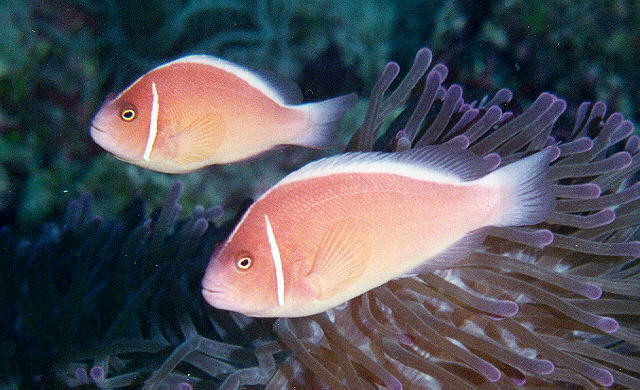
The pink skunk clownfish known as amphiprion perideraion as the scientific name. The pink skunk clownfish has the dorsal band but can be distinguished by a vertical band across the gill cover. You can buy tank raised individuals but most likely you have a wild caught species.
Size: Females get up to 4 inches and males get up to 2.75 inches.
Feeding: Pink Skunk clownfish like to eat macro-algae, diatoms, tunicates, copepods, benthic worms and many of the animals associated with zoo plankton. At home offer enriched mysis and brine shrimp, chopped shellfish and dried algae.
Location: The pink skunk clownfish is from the Eastern Indian Ocean to Western Pacific Ocean, Tonga and the Great Barrier Reef.
Breeding: Like most all clownfish (anemonefish) this species is a protandrous germaphrodite which means that is a male before it becomes a female. If you buy two, the largest fish will be female.
Tank Size: The minimum tank size is 13 gallons with excellent water quality.
Tank introduction: When newly introduced into the tank the pink skunk clownfish can fall victim to territoral fish such as dasmselfishes or wrasses. However pink skunk clownfish that are settled into a host anemone have little to worry about.
Word of Caution: At your local-fish-store some specimens arrive in quite poor condition, select only ones that are eating or very active swimming individuals.
Coral compatibility: The pink skunk clownfish should not harm invertebrates however some have been known to adopt a long-tentacled coral species as a surrogate anemone. If this happens it will irritate the coral and the polyps will be prevented from opening.
Be sure to keep the pink skunk clownfish by itself or in small groups added simultaneously as juveniles and additionally only wild-collected true pairs. Interesting to note the Pink Skunk clownfish has been known to share its anemone in the wild with the A. akallopisos species.



